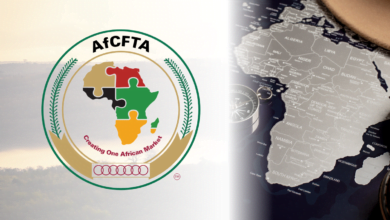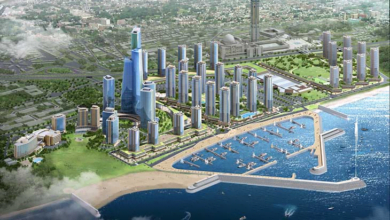A report published by the World Bank entitled « Coping with drought in arid zones of Africa » portrays the impact of drought in some African countries located in arid areas. This report highlights various solutions to address this critical phenomenon.
In a report published on May 9th, the World Bank announced its willingness to take steps to sustainably increase resilience to drought. The first conference of the Great Green Wall in Dakar related to the confrontation of drought in Africa’s drylands and the opportunities to enhance resilience. This report demonstrates the importance of conducting a series of interventions by explaining that they could contribute to reducing, by up to half, the impact of drought in African drylands. These measures, if implemented, should put out of harm’s way, each year, an average of 5 million people, living in extremely poor areas of Africa. « Drylands pose a fundamental challenge to the development of Africa, » underlines Makhtar Diop, Vice President of the World Bank for the African region. « It is crucial for sustained poverty reduction to better control the impacts of extreme weather events and climate variability, as the number of people living in drylands, in competition for scarce resources is increasing » he adds.
Facing the aftermaths of global warming
The report “Confronting Drought in Africa’s Drylands” mentions countries in East and West Africa located in arid, semi-arid and sub-humid areas where over 300 million people live and face every day the threats of drought. According to the report, « serious and frequent shocks they face, particularly droughts, already limit livelihoods, undercut efforts to eradicate poverty and require the provision of immediate assistance ». The future is even more problematic: population growth and drylands could increase by up to 70% the number of people living in burdensome environments, in 2030 « . It would however be possible to improve the resilience of populations by improving livestock, agriculture and natural resources management. « Our research shows that, by investing in viability and productivity of pastoral and agricultural activities, we could significantly enhance African development prospects of East and West Africa and mitigate losses affecting disproportionately poor households « said Raffaelo Cervigni, senior economist and environmental specialist at the World Bank and co-author of the report.
Enhancing key sectors:
According to the report, « in 2010, only 30% of households pastors and agro-pastoralists living in the Sahel and the Horn of Africa had enough animals to be able to escape poverty in the event of repeated drought » . In order to protect households of farmers, actions have been taken to increase productivity .Thus, providing improved animal health services, early exploitation of young male animals, reduction of inventories in anticipation of drought and improving access to pasture- areas could increase by 50% the proportion of resilient households. «To overcome problems caused by drought, the World Bank offers solutions in some key areas. Indeed, the main lines of thought are related to the improvement of agricultural production technologies, soil fertility management and tree planting as part of the agricultural framework in force. All these proposals can also help to improve resilience by increasing agricultural productivity and improving crop tolerance to drought and heat. As well as to produce fruits and reduce household food insecurity, planting trees in the fields generates fertilizers. This type of planting also helps reduce water and heat stress affecting cultures. Trees provide wood and other elements that can be sold when the shortage could hit its highest point. Irrigation is also considered as a key point to mitigate the effects of drought in arid areas. Moreover, according to the press release of the World Bank « analyzes conducted for this report indicate that it would be feasible financially to develop irrigation in five to nine million hectares of drylands ». Other actions examined in the report consider an integrated landscape management to restore the health of deteriorated areas, recreate functional and productive ecosystems, and lower trade barriers to increase food abundance. « The estimated cost of these tailored technical interventions should vary between 0.4 and 1.3 billion per year, » states the press release. « These costs are lower than those for emergency aid and could be covered by the current development budgets, » asserts Michael Morris, chief economist and agriculture specialist at the World Bank as well as co-author of the report. More importantly, he adds that unlike the short-term remedies, such interventions can lay the foundations for sustainable development by allowing people to accumulate sufficient assets to escape poverty and avoid falling back there,». Although anticipatory measures to counter resilience are undertaken, a large proportion of populations remains threatened by drought in 2030. Thereby the report highlights the importance of deploying social protections and investing in human and physical resources in order to ensure a gradual transition to survival means relying less on natural resources.





